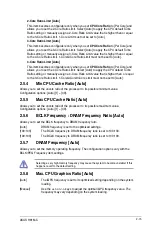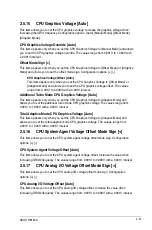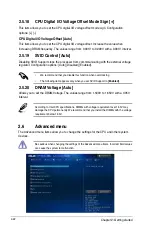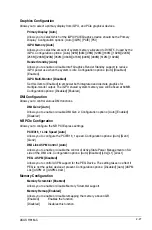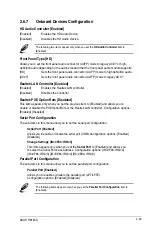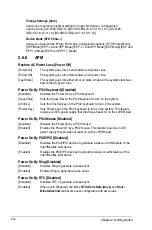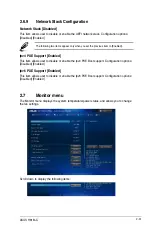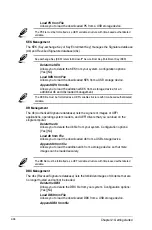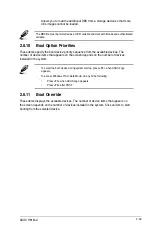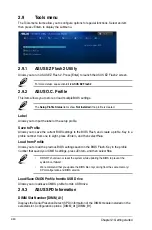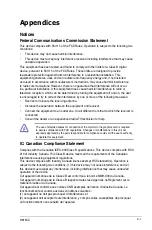
2-28
Chapter 2: Getting started
2.6.5
USB Configuration
The items in this menu allow you to change the USB-related features.
The
USB Devices
item shows the auto-detected values. If no USB device is detected, the
item shows None.
Legacy USB Support [Enabled]
[Disabled]
The USB devices can be used only for the BIOS setup program.
[Enabled]
Enables the support for USB devices on legacy operating systems (OS).
[Auto]
Allows the system to detect the presence of USB devices at startup. If
detected, the USB controller legacy mode is enabled. If no USB device is
detected, the legacy USB support is disabled.
Intel xHCI Mode [Smart Auto]
[Smart Auto]
Enables the operation of xHCI controller.
[Auto]
Keeps the last operation of xHCI controller in OS during bootup.
[Enabled]
Enables the function.
[Disabled]
Disables the function.
EHCI Hand-off [Disabled]
[Enabled]
Enables the support for operating systems without an EHCI hand-off
feature.
[Disabled]
Disables the function.
USB Single Port Control
USB3_1~2 [Enabled]
Allows you to enable or disable an individual USB port. Refer to the section
1.2.3
Motherboard layout
in this user manual for the locations of the USB ports.
Configuration options: [Enabled] [Disabled].
USB_3~6, 9~12 [Enabled]
Allows you to enable or disable an individual USB port. Refer to the section
1.2.3
Motherboard layout
in this user manual for the locations of the USB ports.
Configuration options: [Enabled] [Disabled].
2.6.6
Platform Misc Configuration
The items in this menu allow you to configure the Platform Misc.
PCI Express Native Power Management [Disabled]
Allows you to enhance the power saving feature of PCI Express and perform ASPM
operations in the operating system. Configuration options: [Disabled] [Enabled]
Native ASPM [Disabled]
The item appears only when you set the previous item to [Enabled] and allows you to enable
or disable ASPM. Configuration options: [Enabled] [Disabled]


